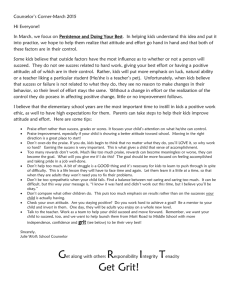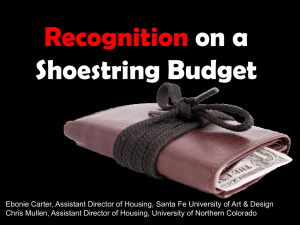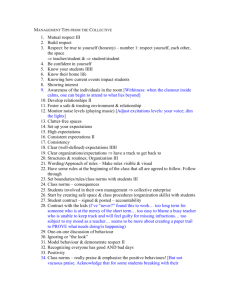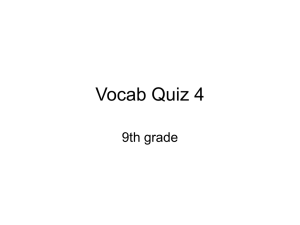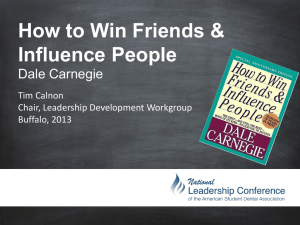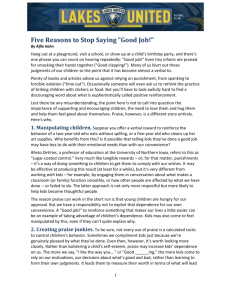12 Easy Behavior Tips
advertisement
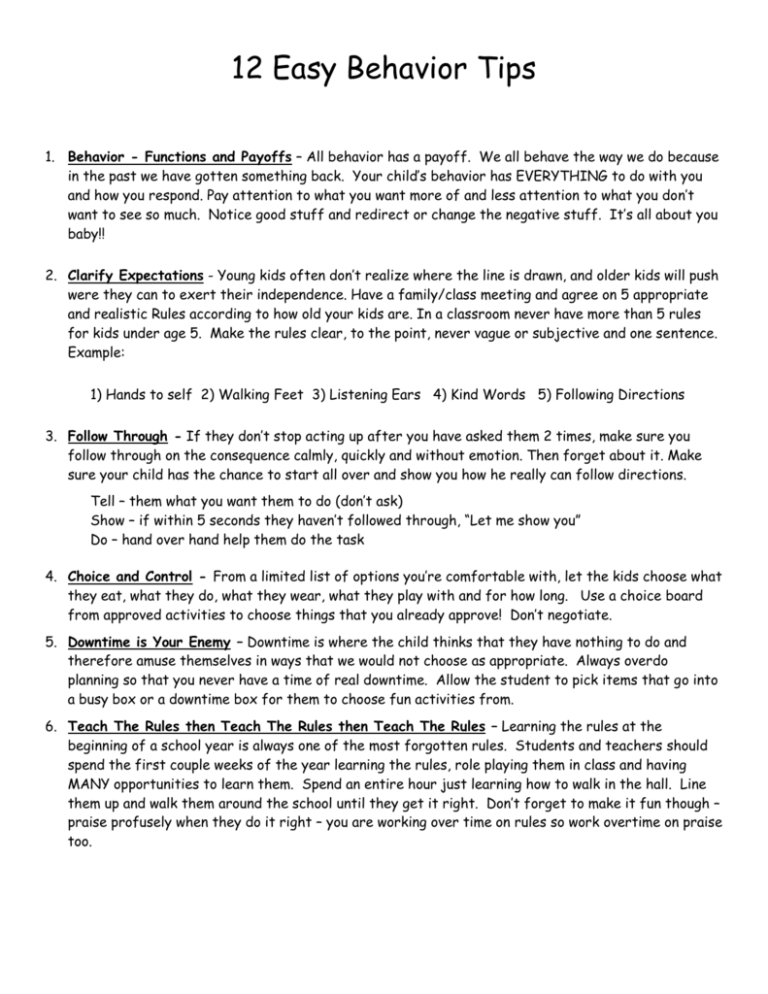
12 Easy Behavior Tips 1. Behavior - Functions and Payoffs – All behavior has a payoff. We all behave the way we do because in the past we have gotten something back. Your child’s behavior has EVERYTHING to do with you and how you respond. Pay attention to what you want more of and less attention to what you don’t want to see so much. Notice good stuff and redirect or change the negative stuff. It’s all about you baby!! 2. Clarify Expectations - Young kids often don’t realize where the line is drawn, and older kids will push were they can to exert their independence. Have a family/class meeting and agree on 5 appropriate and realistic Rules according to how old your kids are. In a classroom never have more than 5 rules for kids under age 5. Make the rules clear, to the point, never vague or subjective and one sentence. Example: 1) Hands to self 2) Walking Feet 3) Listening Ears 4) Kind Words 5) Following Directions 3. Follow Through - If they don’t stop acting up after you have asked them 2 times, make sure you follow through on the consequence calmly, quickly and without emotion. Then forget about it. Make sure your child has the chance to start all over and show you how he really can follow directions. Tell – them what you want them to do (don’t ask) Show – if within 5 seconds they haven’t followed through, “Let me show you” Do – hand over hand help them do the task 4. Choice and Control - From a limited list of options you’re comfortable with, let the kids choose what they eat, what they do, what they wear, what they play with and for how long. Use a choice board from approved activities to choose things that you already approve! Don’t negotiate. 5. Downtime is Your Enemy – Downtime is where the child thinks that they have nothing to do and therefore amuse themselves in ways that we would not choose as appropriate. Always overdo planning so that you never have a time of real downtime. Allow the student to pick items that go into a busy box or a downtime box for them to choose fun activities from. 6. Teach The Rules then Teach The Rules then Teach The Rules – Learning the rules at the beginning of a school year is always one of the most forgotten rules. Students and teachers should spend the first couple weeks of the year learning the rules, role playing them in class and having MANY opportunities to learn them. Spend an entire hour just learning how to walk in the hall. Line them up and walk them around the school until they get it right. Don’t forget to make it fun though – praise profusely when they do it right – you are working over time on rules so work overtime on praise too. 7. Deal with Disruptions with as Little Interruption as Possible - When you have classroom disruptions, it is imperative that you deal with them immediately and with as little interruption of your class momentum as possible. If students are talking amongst themselves and you are having a classroom discussion, ask one of them a question to try to get them back on track. If you have to stop the flow of your lesson to deal with disruptions, then you are robbing students who want to learn of their precious in-class time. 8. Avoid Confrontations in Front of Students – Praise in public and redirect and punish in private. Whenever there is a confrontation in class there is a winner and a loser. Obviously as the teacher, you need to keep order and discipline in your class. However, it is much better to deal with discipline issues privately than cause a student to 'lose face' in front of their friends. It is not a good idea to make an example out of a disciplinary issue. Even though other students might get the point, you might have lost any chance of actually teaching that student anything in your class. 9. Pivot Praise - When one student is acting out in class and other students are following the rules close by, it is easier to redirect that child by offering your attention to the students that are doing what you want. You would pivot your body away from the acting out student to the acting correct student. You praise them loudly and with silliness so that your attention becomes the most craved item at the time. You will see the other student trying to get your attention quickly. 10. ATTENTION – If you want to INCREASE any behavior pay attention to it. If you give your attention to behaviors you do not want – they will most likely increase. Be careful how you use your most valuable tool. Only give attention when you see behaviors you want, and ignore every possible behavior that is not wanted – (remember safety first though) 11. Escape – If a child is behaving the way you DO NOT want, trying to escape a direction or task, try to never let them escape. This may be difficult in a classroom with only one teacher, but try to at least have them do part of the task. Also review the skills of the child and determine is it age appropriate, is it too difficult for the learning level and also is there a way to make it more hands on so that it is more fun. IF you answered yes to any of the above, try changing the assignment, teaching the child to do half the problems and work up to a whole worksheet, teach them to ask for a break. If you can honestly say that the work is appropriate, then ensure the task is completed in some form before moving on. 12. Transitions – If you are in the middle of something fun, and someone interrupts you, don’t you get a little annoyed? This is the way children see it too. Always remember to give transition countdowns (5 min, 2 min). It is good to also have a transition song or a transition sound (bells, chimes). If you have a particular student that always has trouble with transition – physically move to them and give the transition warnings and the final direction. You may have to perform the Tell, Show, Do exercise for a couple times, but once they realize that you say what you mean and mean what you say, there will be an expectation of follow through.

